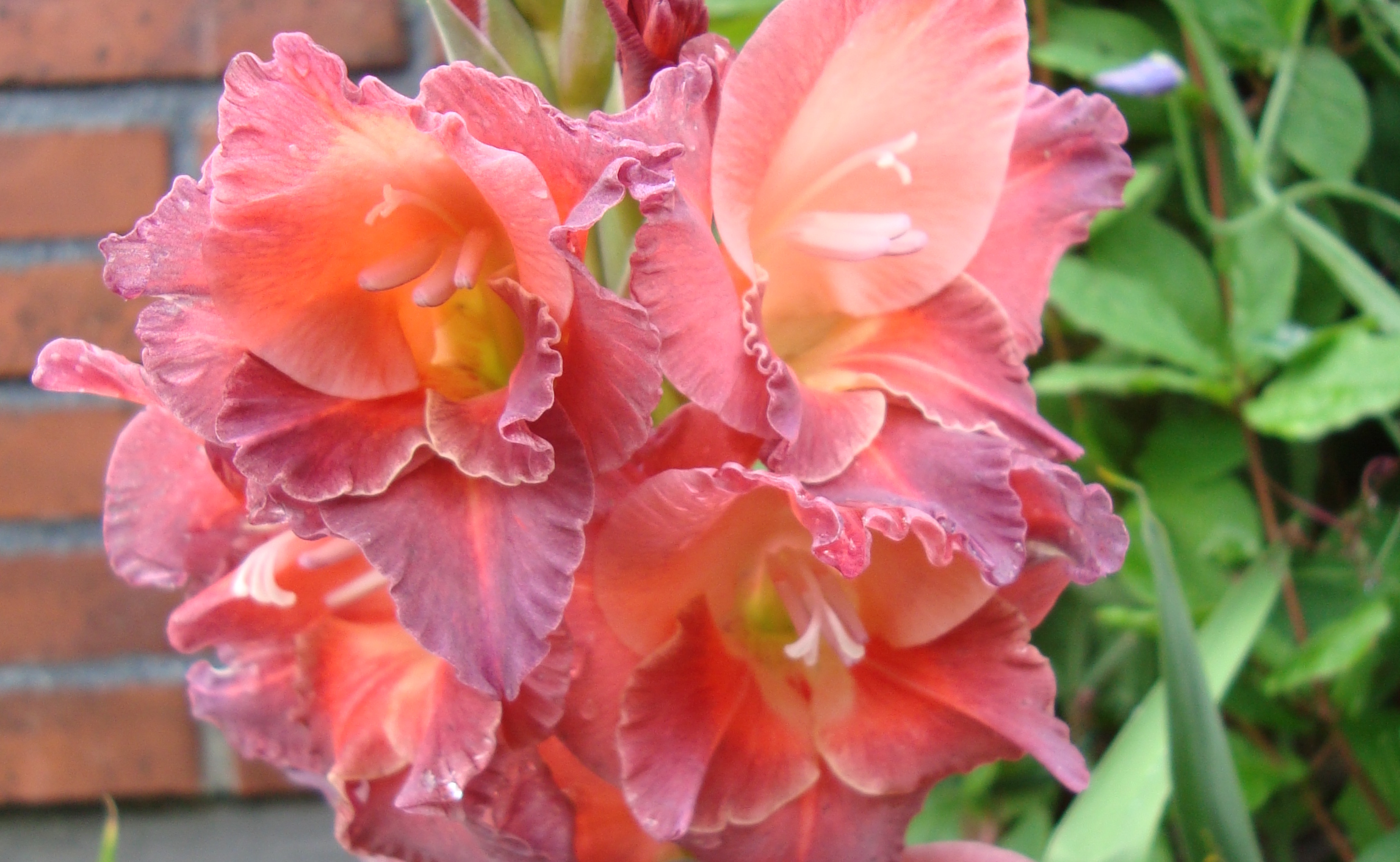Gladden a late-summer garden with gladiolas

COLUMBIA, Mo. — Few flowers bring more late-summer gladness than gladiolas, says University of Missouri Extension horticulturist David Trinklein.
Their colorful flowers are known botanically as spikes. Individual flowers on the spike are called florets. “Glads are somewhat unique in that the florets on the spikes all point in the same direction,” Trinklein said in a press release.
In Missouri, glads grow as annuals, but some species grow as perennials in warmer climates, he says.
Glads vary in height, flower form and size. Popular types include grandiflora hybrids with large individual florets and tall spikes; dwarf grandiflora hybrids, which are about half the size of grandiflora hybrids; and gladiolus nana hybrids, which are smaller yet than the dwarf hybrids.
Corm selection
The food-storage structures of glads are swollen underground stems called corms. Each year a new corm forms on top of the old one, which shrivels and dies.
Healthy corms are essential to produce vigorous plants with flowers of maximum size. A healthy corm should be firm, smooth, undamaged and without discoloration.
The size of the plant and flowering spike produced is directly related to the size of the planted corm. Corms are graded into sizes such as Jumbo (2 inches or more in diameter), Number One (1½ to 2 inches in diameter) and Number Two (1¼ to 1½ inches in diameter).
Site selection
Glads grow well in sunny exposures. They do well in many soil types but prefer loam or sandy loam with a pH of 6.0-6.5. Soils that produce good potatoes, corn or other garden vegetables will produce good glads.
Planting
Glads may be planted a month before the average last frost date and at two-week intervals thereafter for a succession of blooms. The last planting should be no later than early July so that the corms have time to develop and mature before frost.
Plant large corms 4-6 inches deep, medium-sized corms 3-4 inches deep and small corms 2-3 inches deep. Cover only 2 inches in the beginning and pull soil to the plants with each cultivation.
Staking
Staking is often necessary to ensure tall, straight flower spikes, especially on the taller types. You can use 1-by-1-inch stakes made from any suitable lumber. Tie the spikes to the stakes with soft twine or cloth strips at about 10-inch intervals.
Fertilizer side-dressing
A side-dressing of fertilizer after the plants are well established will increase vigor. Apply a 5-10-5 fertilizer to each row. This can be applied in a band on one side of the row, keeping 4 to 6 inches away from the stems.
Cutting flowers
Glads look best in the garden when mature flowers are harvested. Spikes should be cut in their prime for maximum life indoors. Cut the spike when the first floret is showing color. To cut the spike, insert a sharp knife above the second to fourth leaf and make a slanting cut up the stem. Immediately immerse the cut spike in water.
Digging and storing corms
“At our latitude, corms are not winter-hardy and must be dug if they are to be used the following year,” Trinklein says. Be ready to dig four to six weeks after blooms are finished or when the tops die off.
After digging, wash soil off the corm and roots. Cut the tops to within a half inch of the corm. Corms can be left outdoors in the sun for a day or two if temperatures are mild and then spread out in a light, airy place to cure. They should be stored during the winter at a temperature of 35-45 F in a well-ventilated area.
Learn more about this summer delight in David Trinklein’s article “Glads: As American as Apple Pie” at ipm.missouri.edu/MEG/2022/5/glads-DT.
Portions of this article were adapted from an article by the National Garden Bureau.
Miss Clipping Out Stories to Save for Later?
Click the Purchase Story button below to order a print of this story. We will print it for you on matte photo paper to keep forever.
